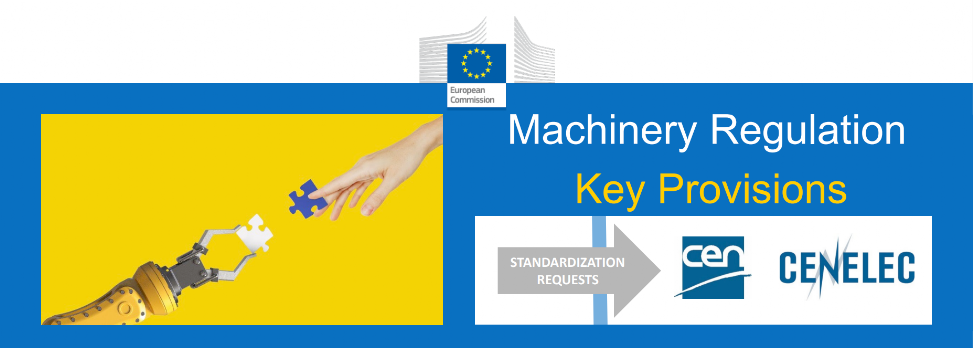New Machinery Regulation
New Machinery Regulation
EUROPE RELIES ON EMERGING TECHNOLOGIES
In the digital age the European Parliament updates legislation to ensure machinery safety, the new Machinery Regulation is born.
In April 2023, the European Parliament approved the publication of the new Machinery Regulation (which will replace the previous Machinery Directive). It will contain rules for new market developments and for the risks arising from emerging technologies.
This legislative framework will bring greater security for its users, the machinery industry and SMEs in particular.

When will the new rules come into force? How will the motorised doors and gates sector be affected?
The new Machinery Regulation will be published in the European Official Journal, thus compulsorily entering into force for all member states. The month of publication will be between July and August 2023.
Obviously there will be a very long transition period (42 months) as the changes are important and numerous, remembering that no updates have been made since 2006. During this period, the CEN Technical Committees will be involved in the final revision, with the participation of our WG5 expert Alberto Bertan, Technical Director of the Microtronics BlueTraining professional training courses area.
These are the most important points that will involve not only manufacturers, but also installers and maintainers:
- First of all, new types of machinery with 'self-evolving' behaviour based on machine learning were introduced, but we are not only thinking of 'robotics', but also simpler machines such as the 'automatic lawnmower' or the '3D printer'.
- Then several aspects related to artificial intelligence and cyber security were added, whereby risk assessment (for instance) should also consider immunity (or not) to cyber attacks.
- As a consequence, digital components (such as software) will also be considered as safety components and must therefore be CE marked.
- In the new regulation, a more consistent interpretation of the scope is ensured in order to improve safety for traditional technologies, and re-evaluate machines considered to be 'high risk'.
- The concept of Substantial Modification has been clarified, which will take into account any modification that has an impact on safety, i.e. an increase in the level of safety not originally envisaged by the machine manufacturer. Furthermore, the person who makes a substantial modification acquires the role of "new manufacturer" by assuming responsibility. If the substantial modification involves a safety-related part of the machine, the person making the modification is considered the manufacturer for that part only.
Finally, we would like to remind you that the Technical Committees have been busy in the last few years with the recent "harmonisations" related to standards EN12604:2017+A1:2020 and EN12453:2017+A1:2021. After the publication of the new Machinery Regulation, the consistency of all other standards involved will also have to be ensured in order to avoid interpretative divergences resulting from transposition, so a great deal of revision work will be expected over a long period.


